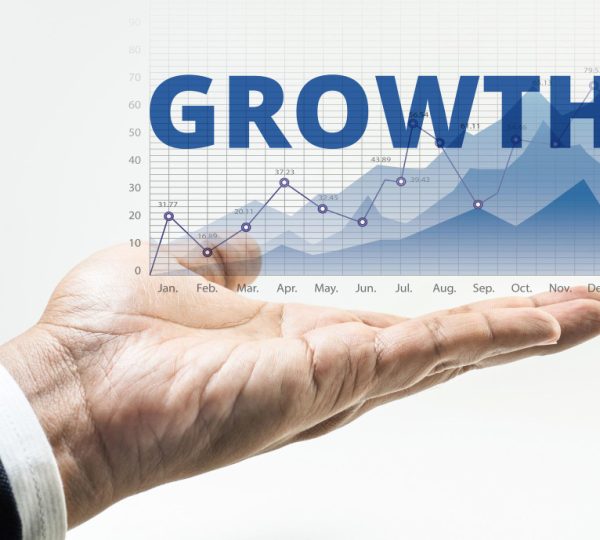Effects of Imports and Exports on the Economy
In today’s global economy, consumers are used to finding products from all over the globe at their local grocery shops and other companies. These shipments from other nations provide consumers with more alternatives. Imports also assist customers in managing their tight family budgets because they are often made more inexpensively than any domestically produced counterpart.
If a country buys more than its exporting, which are items shipped from one country to another, the trade balance will be skewed, and the currency would weaken. So because value of cash is one of the primary determinants of a nation’s economic performance and its gross domestic product, it might have a big impact on how people live their daily lives (GDP). Imports and exports must be kept in a good mix within a country. The GDP, exchange rate, rate of inflation, and borrowing costs of a nation may all be influenced by its import and export operations.

Gross Domestic Product Impact
A nation’s economic activity is broadly measured by its gross domestic product (GDP). Exports and imports significantly affect the expenditure approach of computing GDP. The GDP calculation is done as follows:
GDP=C+I+G+(X−M) \swhere:
C- Consumption of products and services by consumers
I-Investment spending on equipment for businesses
G – Government expenditures on public goods and services.
X – Exports
M – Imports
Imports are subtracted from exports to get net exports (X – M). When exports surpases imports, the net exports figure is positive. This demonstrates that country has a trade surplus. Whenever exports are less than imports, the net exports figure is negative. This implies that the nation has a trade imbalance. A trade surplus promotes a nation’s economic expansion. A country’s factories and industrial facilities need a greater staff to maintain their high production levels, which are shown by higher exports.
A company’s excellent export volume also converts into a financial inflow into the country, which promotes consumer spending and promotes economic growth.
Your Relationship With Imports And Exports
A nation must spend its own money while importing goods. The importers are regional companies that pay the exporters; the exporters are international organizations. High import levels are a sign of both a growing economy and solid domestic demand. If the majority of these imports are significant capital like machinery and equipment, the nation will benefit even more since over time, these assets will increase the productivity of the economy. An expanding trade balance between imports and exports is indicative of a healthy economy. This frequently indicates rapid economic development and a persistent excess or shortfall in global trade. When exports are rising and imports are significantly down, foreign countries may be performing better than the US economy.
In contrary, if exports fall but imports rise, this may indicate that the domestic market is performing better than the global market.
For instance, during periods of strong economic growth, the U.S. trade deficit frequently worsens. Currently, the United States imports more things than it exports. Despite its ongoing trade imbalance, the United States continues to be one of the most efficient economies in the world. Nevertheless, generally speaking, a rise in imports and a growing trade deficit can have a negative influence on a country’s exchange level, or the rate at which foreign currencies value its local currency.
Exchange rate effects
Because there is a continuous feedback loop between international commerce and how a nation’s currency is valued, the link between a nation’s imports and exports and its currency value is intricate. The trade surplus or deficit impacts the exchange rate, affecting the exchange rate. However, in general, a weaker home currency encourages exports and raises the price of imports. Robust native cash, on the other hand, makes imports more affordable and hinders exports. Consider an electrical component that will be sold to India and costs $10 in the United States.
Assume there is a 50 to 1 rupee to dollar exchange rate. The $10 component would price the Indian importer 500 rupees, excluding shipping and processing fees like import taxes.
The price of the component would rise to 550 rupees ($10 x 55) for the Indian buyer if the dollar were to appreciate to a level of 55 rupees (to one U.S. dollar) and the U.S. exporter did not raise the price of the component. This may compel the Indian importer to hunt for less expensive parts from other countries. Thus, the dollar’s 10% increase against the rupee has made it more difficult for American exporters to compete in the Indian market. Meanwhile, assuming a conversion rate of 50 rupees to one dollar, consider an Indian clothing exporter whose primary market is the United States. When the export revenues are collected, the exporter will receive 500 rupees for each shirt they sell for $10 on the American market (neglecting shipping and other costs).
The exporter may sell the garment for $9.09 to get the same number of rupees if the currency drops from 55 rupees to a dollar (500). Therefore, the rupee’s 10% decline against the dollar has increased the Indian exporter’s competitiveness in the American market. The 10% increase in the dollar value relative to the rupee has made American exports of electrical parts uncompetitive. Still, it has also reduced the price of imported Indian shirts for Americans. On the other hand, a 10% depreciation in the rupee value has increased the competitiveness of Indian textile exports while increasing the cost of electronic component imports for Indian consumers.
The imports and exports of a nation can be significantly impacted by currency changes when millions of transactions compound this situation.
Effects on Interest Rates and Inflation
The exchange rate is the main mechanism through which inflation and interest rates affect imports and exports. Typically, higher interest rates follow increasing inflation. It’s not obvious if this makes the currency stronger or weaker. As per traditional currency theory, when compared to another currency, money would lose value if the latter has higher interest rates and inflation rates. The open interest rate parity theory holds that the difference in speeds between both the two countries equals the projected change in their exchange rates.
Hence, if the interest rates of two countries differ by 2%, the currency of the country with the higher interest rate should devalue by 2% relative to the country with the lower interest rate.
However, since the global credit crisis of 2008–2009, low-interest rates have mostly prevailed, leading investors and speculators to seek out the greater returns of currencies with higher rates. As a consequence, interest rates have gone up and currencies have strengthened. Naturally, this strategy is frequently restricted to nations with good economic foundations and stable currencies. These investors must be confident that currency depreciation would not negate greater returns.
Exports and the trade balance may suffer due to a more substantial home currency. By directly increasing the cost of resources like labor and materials, an increase in inflation can also have an impact on exports. The competitiveness of export prices in international trade is impacted by these more unusual costs.
Financial Reports
The best data to monitor imports and exports comes from a country’s merchandise balance of trade report. This report is released each month by the most of the main countries. Statistics on the trade balance are normally released by Statistics Canada and the U.S. Census Bureau with a one-month lag within the first 10 days of the month. The most important product groupings for exports and imports as well as historical trends, are all included in these publications. They include a range of information as well.



